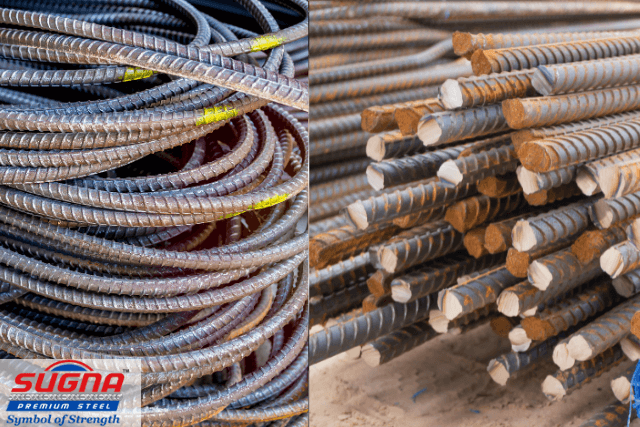Hello there, dear readers! Ever found yourself at a construction site (or maybe just at a casual dinner debate) wondering about TMT and QST bars? Don’t worry, you’re not alone! These two types of bars are commonly used in construction but can be a tad confusing. So, if you’ve been scratching your head over this, sit tight. We’re about to demystify the difference between TMT and QST bars just for you.
TMT Bars: A Quick Intro
Let’s kick things off with TMT bars. TMT stands for Thermo Mechanically Treated bars. They’re produced by a unique metallurgical process that combines both thermal and mechanical processes. Here’s why they’re a favorite:
- Superior Strength: TMT bars are known for their high strength and ductility.
- Resistance to Corrosion: They tend to be more resistant to rust compared to other bars.
- Heat Resistant: Perfect for those hot climates!
QST Bars: What’s the Buzz?
Next up, QST or Quenched and Self Tempered bars. The production of these bars involves rapidly cooling them (that’s the quenching part) and then allowing them to temper naturally in the air. Cool, right? Here’s what makes them special:
- High Flexibility: Despite their strength, QST bars can be easily bent without breaking.
- Fine Grained Structure: This ensures a uniform and strong bar.
- No External Tempering Needed: They’re self-tempered, which saves time and resources.
TMT vs QST

Now, the moment you’ve been waiting for! Let’s dive deep into their differences.
Comparing TMT and QST Bars
| Features | TMT Bars | QST Bars |
|---|---|---|
| Manufacturing Process | Thermo Mechanically Treated | Quenched and Self Tempered |
| Strength | Very High | High |
| Flexibility/Ductility | High | Higher |
| Corrosion Resistance | Good | Moderate |
| Heat Resistance | Excellent | Good |
| Cost | Generally higher due to the complex process | Slightly less expensive |
Which One to Choose: TMT or QST?
The decision boils down to your specific needs:
- For heavy-duty infrastructure: Given its superior strength and corrosion resistance, TMT bars might be your best bet.
- For intricate designs that need more bending: QST bars, with their exceptional flexibility, could be the winner.
- Budget constraints: If you’re watching the pennies, QST bars are usually a tad cheaper.
A Few Tips When Buying
- Check Certifications: Make sure the bars conform to industry standards.
- Ask for Recommendations: Speak to experts or folks who’ve recently undertaken construction.
- Sample Testing: If possible, get a few samples tested for quality.
Hire Sugna TMT
If you’re considering TMT bars for your next project, Sugna TMT is a name you’ll want on your radar. We’ve made a mark for ourselves with the high-quality TMT bars, ensuring durability and top-notch performance. Plus, the customer service is pretty awesome, making the process smooth from selection to delivery. So, thinking of TMT bars? Think Sugna TMT!
In Conclusion
So, there you have it, the key differences between TMT and QST bars laid out in the simplest terms. Whether you’re planning a construction project or just aiming to be the smarty pants at your next gathering, we hope you found this guide enlightening.
Got more questions or insights? Please leave a comment. We’re all ears! Stay curious and keep building your knowledge (pun intended!). Cheers!

